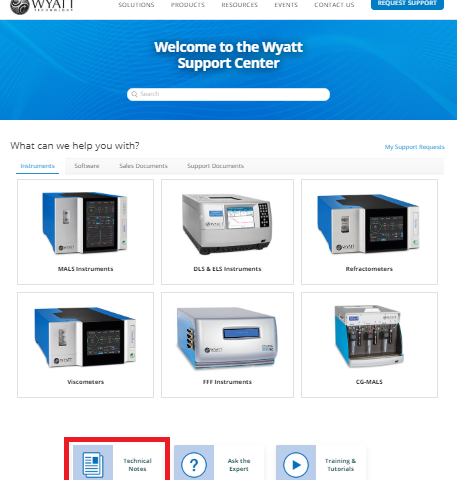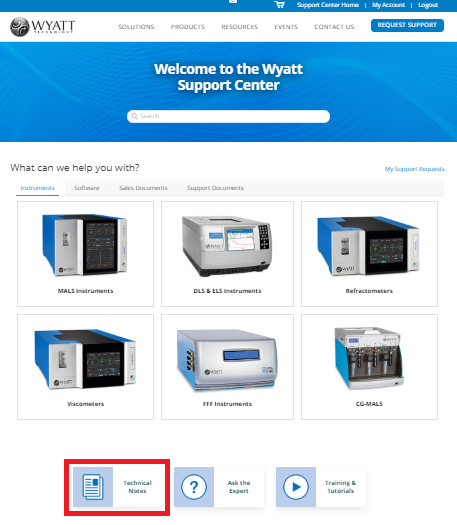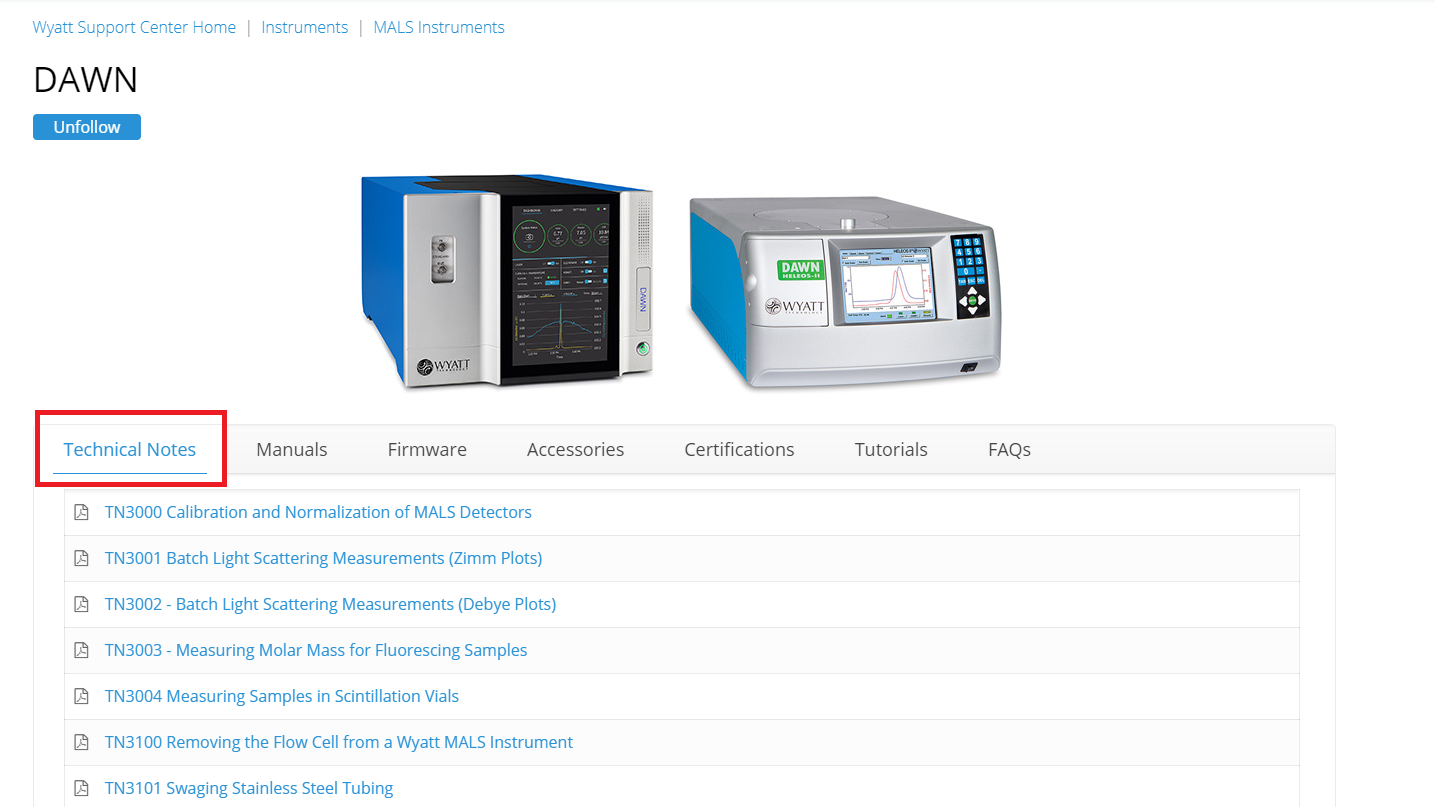Discover New Tricks and Tips with Our Technical Notes

Already a Wyatt customer? Our technical notes provide step-by-step instructions and tips for how to get the most out of your instrumentation:
- Quick guides for setting up your instrument or using our software.
- Tips for improving performance
- Best practices for use and care
- Step-by-step instructions for performing advanced analyses on your data such as the Protein Conjugate Analysis or Branching Analysis
- Connection guides for your UHPLC or HPLC
- Troubleshooting guides to keep you up and running
New and Updated Technical Notes
New! TN2008 – Interpreting the Autocorrelation Functions in DYNAMICS Rev A
The autocorrelation function (ACF) is the primary data stream from DLS measurements. Consequently, it is critical to verify the quality and fit of the ACF before any size information can be interpreted. This technical note will provide information about what a good ACF looks like and provide examples of various ACFs and what they might indicate for respective experiments. Suggestions for improving data quality are also provided.
Updated TN3505 - Performing SEC-MALS Experiments with ÄKTA FPLC Systems Rev B
The GE ÄKTA FPLC systems are designed for preparative protein work. Therefore, special considerations pertain to using them for analytical applications such as SEC-MALS experiments, including modifications to standard procedures with ÄKTA hardware and Unicorn software.
New! TN5000 - Tips for Better Viscometry Measurements Rev A
The ViscoStar instrument, when paired with a concentration detector, can measure intrinsic viscosity of a dissolved macromolecule. The measurement requires flow, and is assumed to be used with chromatography. To ensure the best quality of data, this technical note will describe a set of tips to ensure the optimal viscometry measurements.
Updated TN6005 - FFF Method Development Quick Start Guide for Aqueous Applications Rev B
This guide is a set of recommended initial sample screening conditions for aqueous FFF applications to evaluate an unknown sample, and then utilizing the results of the initial separation to optimize the separation for a particular sample type.
New! TN9006 – Preventing Condensation in Wyatt Detectors Rev A
This technical note describes precautions when operating temperature-controlled Wyatt instruments at sub-ambient temperatures to prevent condensation inside the detector. Special precautions when working with the DynaPro Plate Reader for sub-ambient and temperature-controlled operations are outlined as well.
You can find technical notes on our Support Center. Simply go to https://www.wyatt.com/support/ and login or register for an account. It’s free for customers! Technical notes are located on their own tile:

You can also find technical notes under each instrument or software application:

